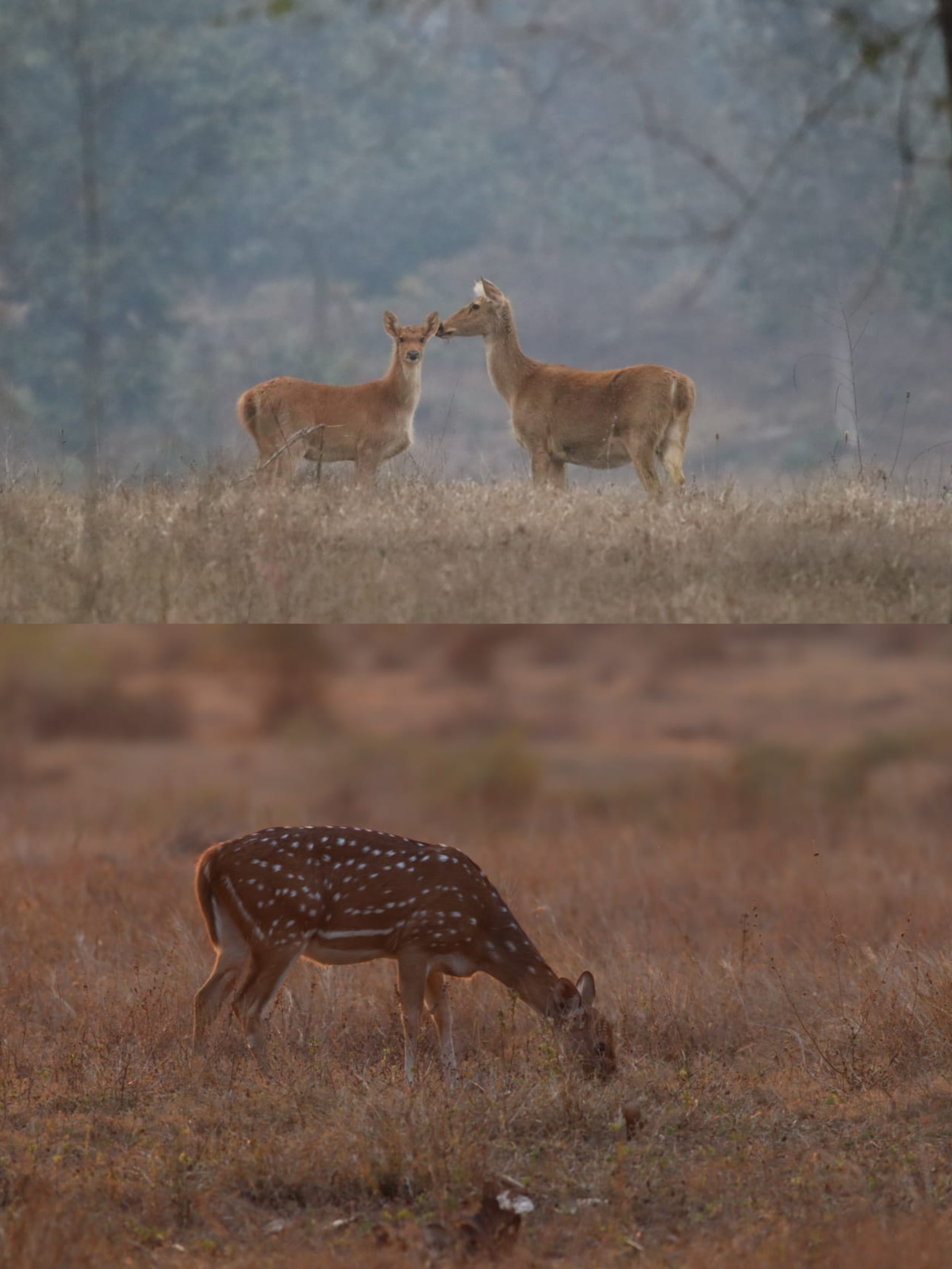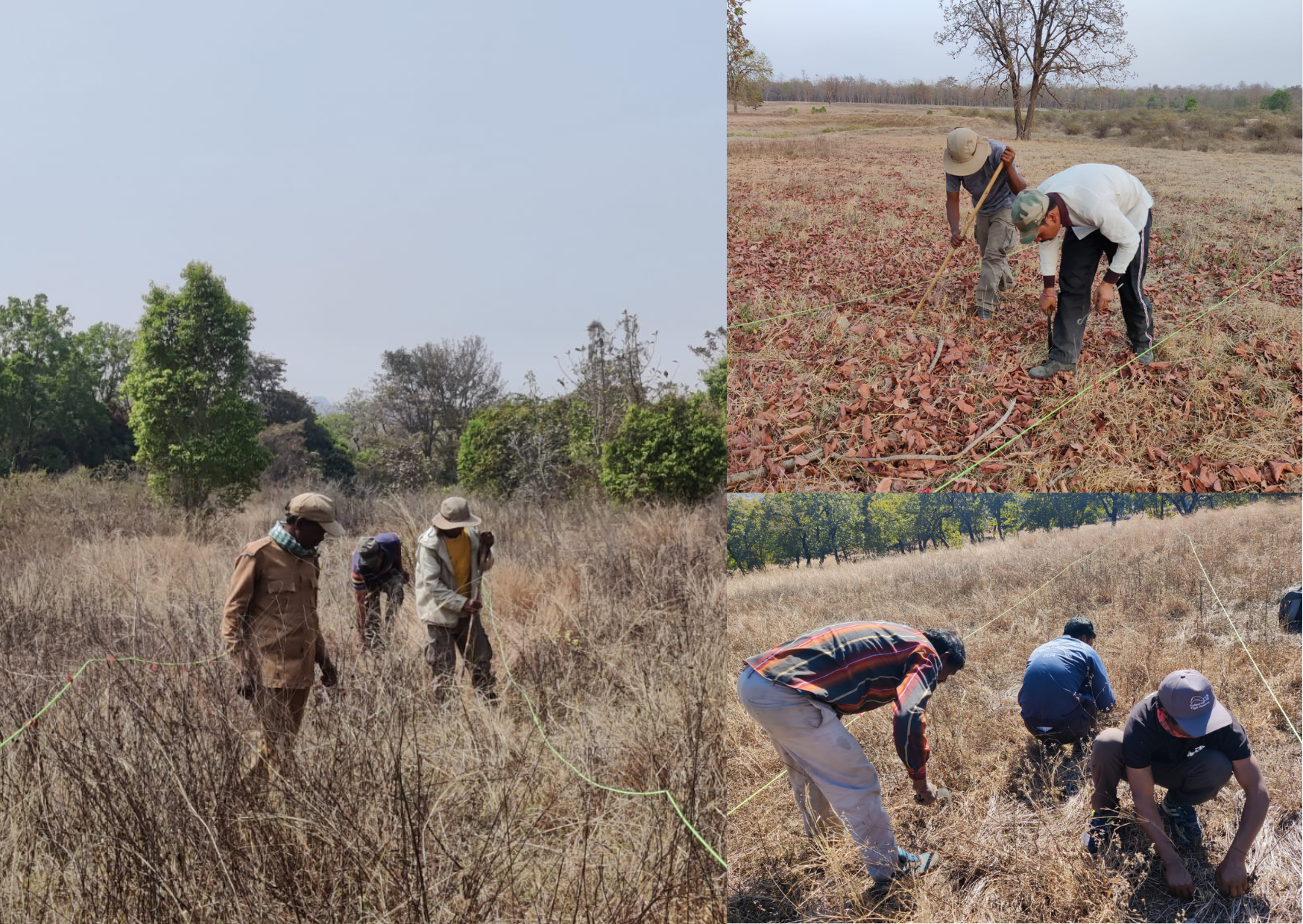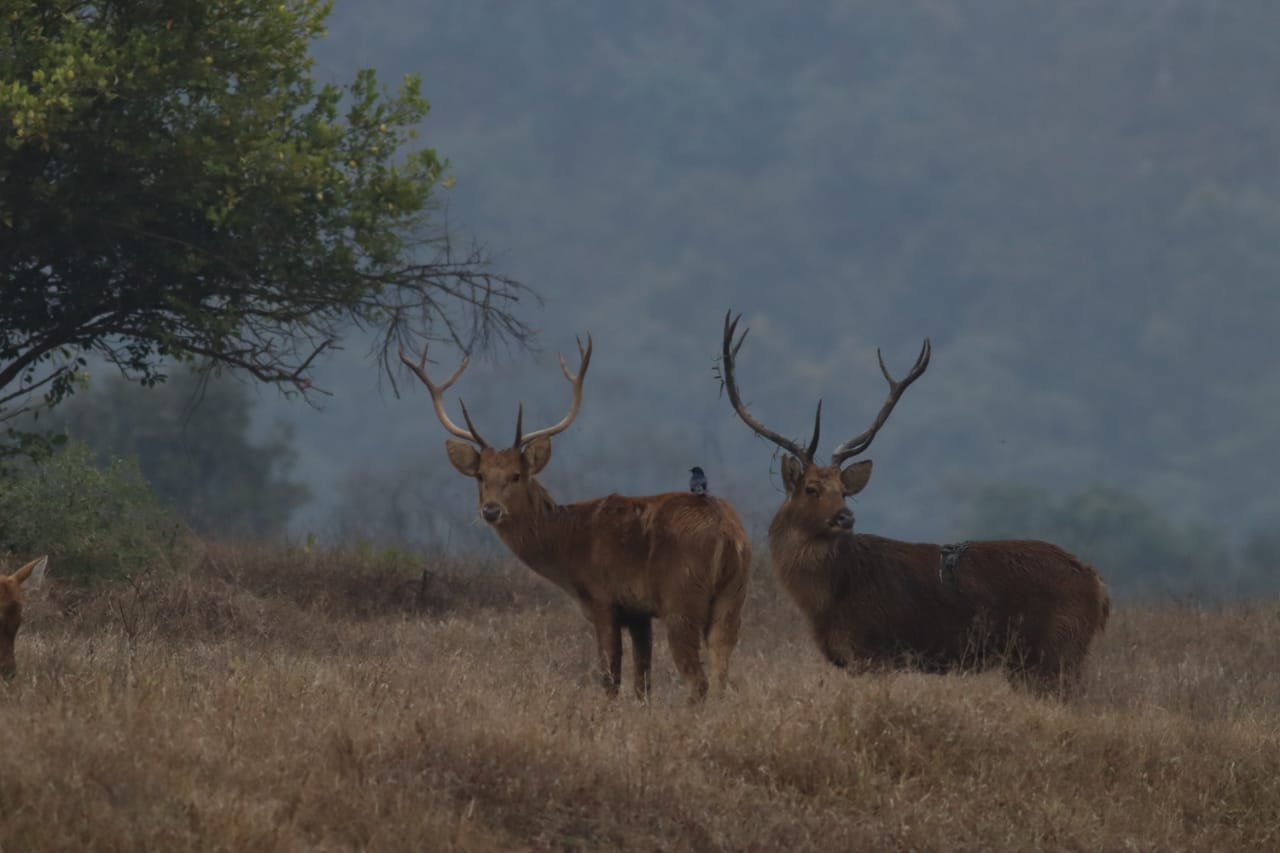When Project Tiger was launched in 1973, efforts to carve out safe havens for tigers took on a new urgency. India already had national parks where human activity was restricted, but the program made the idea of ‘inviolate spaces’ - forests where wildlife could live undisturbed - the cornerstone of tiger conservation. Ever since, the story of saving tigers has also been a story about people. More than five million still live inside protected areas, and millions more depend on them for their survival. Moving villages out of the core zones of reserves has become one of the most ambitious and contentious strategies in Indian conservation.
A recent study from NCBS, in collaboration with scientists from WCS–India and WCT, investigated how large herbivores use old village sites in Satpura Tiger Reserve, Madhya Pradesh, after these places were turned into grasslands following relocation. Sambar, chital, gaur, nilgai, and wild pigs are the main prey base for tigers and leopards. The study found that while deer, antelope and gaur increasingly used relocated village sites over time, wild pigs used them less. These findings shed light on how village relocations, coupled with habitat management, can change the ecological balance of reserves and influence the recovery of large prey.

Field photographs taken during the study Photo credits: Mahendra Kalam
Protected areas cover only around 5% of India’s land, yet are home to iconic wildlife. Communities living inside them depend on the forest for grazing, fuelwood, farming, and non-timber products. These activities, while vital for human survival, can limit food and space for wild animals. At the same time, animals like ungulates raid crops, and carnivores kill livestock, leading to conflict. This has been a part of life in central Indian forests for decades. Past studies have shown that when human pressures are reduced, wild ungulate populations can recover. But relocations are never just about ecological interventions. It comes at a heavy social and cultural cost for people who are relocated. Understanding its real consequences, both for wildlife and people, is essential.
The team set out to measure how herbivores respond to relocation over time. They surveyed 12 villages in Satpura: three still inhabited and nine relocated between 3 and 17 years ago. The forest department now manages the abandoned land as grasslands by planting palatable grasses, removing weeds, and using controlled fires. To track animal activity, the researchers counted dung across 122 plots. This widely used method reveals which animals pass through an area and how frequently, allowing comparisons between grassland patches in relocated villages and the surrounding forest.

Field photographs taken during the study Photo credits: Yashaswi Rao
The results showed clear patterns. Sambar, chital, and gaur used relocated sites more intensively as the years since relocation increased. “Some wildlife species are especially sensitive to human activity. When villages are moved out of protected areas, these species are often the first to benefit, since the disturbance around their habitats decreases. This means that village relocation, as a conservation strategy, could have far-reaching benefits for species that struggle the most to live alongside people,” says Yashaswi Rao, the lead author of the study.
Nilgai also showed some increase, though weaker. Wild pigs showed the opposite trend- their use declined over time. All five species were found to prefer the open grassland patches within the old village sites compared to the denser surrounding forest. The analysis also revealed that other factors, like terrain ruggedness, canopy cover, and distance from streams, influenced where animals were found, but the most consistent effect came from time since relocation and proximity to the grassland edge.
“Species like sambar and gaur are sensitive to human disturbance and livestock competition. When people move out and grasslands are managed, they thrive. Wild pigs, on the other hand, are generalists that rely heavily on crops and human waste, losing out on these resources after relocation. This shows that not all species respond the same way to conservation interventions,” says Rao.
“There is a need for many more such studies in order to better understand the broader impacts of these conservation interventions and to gauge the extent to which the outcomes are context-specific,” says Prof. Mahesh Sankaran at NCBS, who was part of the research team.
Full link to the study: https://link.springer.com/article/10.1007/s10531-025-03101-1









0 Comments